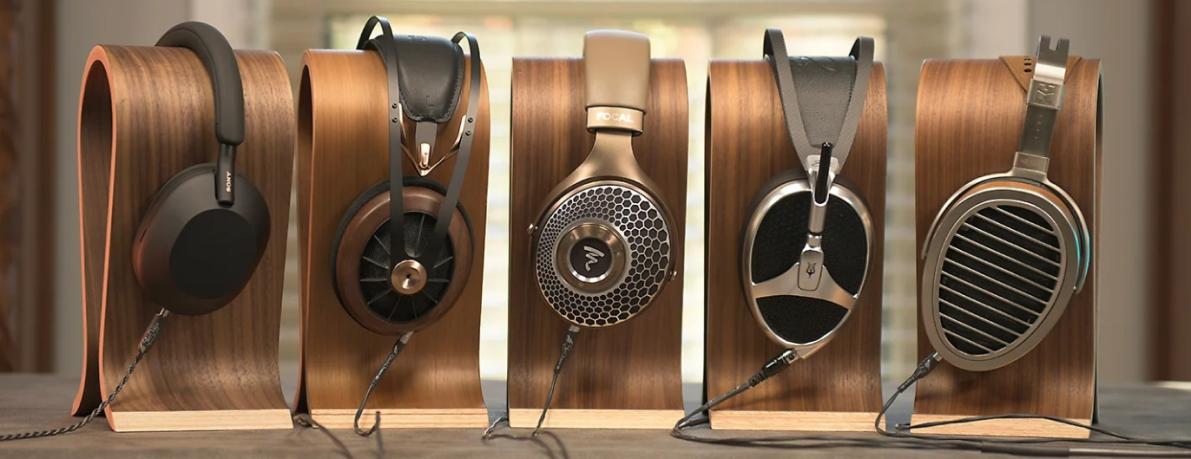Audiophile headphones are designed for high-fidelity audio reproduction, catering to listeners who prioritize precision and nuance. One major debate among enthusiasts revolves around wired versus wireless models. Each type brings its own strengths depending on the user's priorities. Wired headphones are often favored for purer sound, while wireless options offer freedom and smart features. Understanding the differences between these types helps buyers choose the best fit for their needs, whether for critical listening or convenient on-the-go use.

Overview of Audiophile Headphone Fundamentals
Understanding what qualifies headphones as "audiophile" helps clarify why wired and wireless differences matter. Let’s explore key components and criteria.
What Makes a Headphone “Audiophile Grade”
Audiophile-grade headphones prioritize sound accuracy, detail, and a natural listening experience. These models often come with open-back designs for a wider soundstage and use high-end materials to reduce distortion. Brands focus on finely tuned frequency responses that preserve the original recording’s intent. Unlike casual consumer headphones, audiophile options typically avoid artificial bass boosts or enhancements. Their purpose is to deliver a transparent, uncolored sound signature that reflects studio-level audio fidelity, ideal for critical listening and music appreciation.
The Role of Sound Fidelity and Detail
Sound fidelity refers to how accurately headphones reproduce the source audio. Audiophile headphones strive for lifelike clarity, separation of instruments, and a balanced frequency range. Listeners expect to hear every subtle detail—from soft cymbal brushes to layered harmonies. Good fidelity means minimal compression artifacts or tonal coloration. Whether wired or wireless, achieving this level of accuracy requires precision engineering. Some listeners even describe the experience as immersive or revealing, particularly when paired with lossless audio files and quality sources.
Importance of Build, Drivers, and Impedance
Audiophile headphones often feature premium build quality with sturdy metal frames, breathable ear cups, and user-replaceable components. Inside, large dynamic or planar magnetic drivers help deliver accurate sound reproduction. Impedance plays a critical role; high-impedance headphones need powerful amplification to perform at their best. This makes them ideal for home or studio setups with external amps. In contrast, low-impedance models work better with portable devices. Build integrity, driver type, and impedance all affect sound clarity and overall performance longevity.
Advantages of Wired Audiophile Headphones
Wired headphones remain a top choice among purists and professionals. Let’s look at the advantages that make them ideal for audio perfectionists.
Consistent Signal and Zero Latency
Wired connections provide an uninterrupted analog signal path, eliminating concerns about compression or signal drops. This results in clear, distortion-free sound without latency—perfect for real-time listening or editing. Since there's no wireless transmission, the integrity of the original audio remains intact. Gamers, musicians, and engineers often rely on this consistency. With no reliance on battery or Bluetooth, wired headphones deliver a plug-and-play experience that ensures high-quality sound with zero interruptions, every time you press play.
Compatibility with Amps and DACs
Wired audiophile headphones are highly compatible with external amplifiers and digital-to-analog converters (DACs). These devices improve signal purity and volume control, especially for high-impedance models. Audiophiles often pair headphones with specific DAC/amp combos to achieve tailored sound profiles. This setup offers far more control over tone and dynamics than wireless gear. With physical connections, there's minimal signal degradation. The synergy between headphone and source becomes essential, making wired models ideal for audio systems built around precision playback.
Preferred in Studio and Reference Use
In professional studios, accuracy is everything. Wired audiophile headphones dominate in this space due to their faithful sound reproduction. Producers and engineers rely on them to detect subtle flaws or balance instruments during mixing. Unlike wireless headphones, there’s no risk of signal interference or battery failure. Their consistent performance makes them trustworthy tools for mastering tracks. Reference-grade wired models also feature flat frequency responses to avoid coloration, ensuring decisions made during production translate well across other audio systems.

Benefits of Wireless Audiophile Headphones
Modern wireless technology has narrowed the gap in sound quality. Here’s why some audiophiles are embracing wireless convenience.
Convenience and Portability for Daily Use
Wireless audiophile headphones offer unmatched freedom from cords. They’re perfect for commuting, working, or lounging without getting tangled. With foldable or lightweight designs, they fit easily into bags and can pair instantly with smartphones or laptops. Many models feature auto-connect, touch controls, and even voice assistants. For users who value comfort and mobility, this convenience is a major advantage. While they might not replace studio-grade equipment, wireless headphones make quality audio more accessible for everyday situations.
Bluetooth Codecs and Audio Quality Explained
Modern wireless headphones support advanced Bluetooth codecs like aptX, LDAC, and AAC, which reduce compression and preserve more detail during transmission. LDAC, for example, enables near-lossless playback, offering bitrates that approach CD quality. While still not truly equivalent to wired, these codecs provide excellent audio performance for most listeners. Audiophile wireless models often support multiple codecs, automatically adjusting based on device compatibility. Choosing a headphone with high-end codec support helps maintain signal integrity and elevates the wireless listening experience.
Battery Life and Smart Features Overview
Wireless audiophile headphones come with impressive battery life—often exceeding 20 to 30 hours per charge. Many also offer fast-charging capabilities, adding hours of playback in just minutes. Smart features like adaptive noise cancellation, ambient mode, touch gestures, and app-based EQ customization enhance usability. Some models even support firmware updates for ongoing improvements. These features make wireless headphones more versatile, bridging the gap between high-fidelity listening and tech-savvy convenience, all while keeping you connected on the move.
Choosing What’s Right for Your Listening Style
Choosing between wired and wireless audiophile headphones depends on how, where, and why you listen. Let’s explore how to align features with lifestyle.
Match Based on Genre, Environment, and Habits
Different music genres and listening environments influence your ideal choice. Classical or jazz fans may prefer wired setups for better imaging and clarity. Pop and casual genres often sound excellent on modern wireless headphones. If you listen in quiet home settings, wired models shine. But for multitaskers or frequent travelers, wireless wins for ease. Reflect on habits—do you stay in one spot or move around a lot? Matching headphone type to your lifestyle ensures a more satisfying audio experience.
Evaluate Source Devices and Use Cases
Consider what devices you'll connect your headphones to. If you use a smartphone without a headphone jack, wireless might be more practical. Desktop PCs or hi-fi systems with amps support wired models better. Evaluate if you need headphones for commuting, working, gaming, or studio work. Each scenario benefits from different strengths. Wireless shines in flexible setups, while wired offers maximum fidelity when paired with robust audio chains. Your main use case should drive the decision—not just specs.
Consider Futureproofing and Flexibility
Technology is always evolving, and futureproofing matters. Wireless models with upgradable firmware or hybrid modes (wired + wireless) offer long-term flexibility. Battery life improvements and codec support will only get better. Wired headphones, though less tech-dependent, remain timeless tools for purists. If you plan to invest once and use it across years, consider a model that accommodates various setups. Owning a pair that works with both Bluetooth and analog sources can provide the best of both worlds.
Conclusion
Audiophile headphones—wired or wireless—each caters to different listening preferences. Wired models deliver uncompromised fidelity and are ideal for home or studio use. Wireless options, while slightly behind in raw performance, offer unmatched portability and smart features. When deciding between the two, it helps to revisit the basics of What Are Audiophile Headphones to better understand your options. There’s no one-size-fits-all solution. Whether you’re a purist or a modern listener, the right headphones can elevate your music enjoyment to studio-like quality anywhere you go.
FAQ
Yes, some Bluetooth headphones can offer near-audiophile quality, especially with support for high-resolution codecs like LDAC or aptX HD. While they may not match the precision of wired gear, advancements in wireless tech have closed the gap significantly.
Absolutely. Many audiophile headphones now offer hybrid functionality, allowing users to switch between Bluetooth and wired connections. This ensures flexibility and optimal sound in different scenarios.
Wireless headphones have built-in DACs, which convert digital signals to analog. However, the quality of these internal DACs varies. Some models benefit from app-based tuning, while others may sound better when used in wired mode with an external DAC for critical listening.
